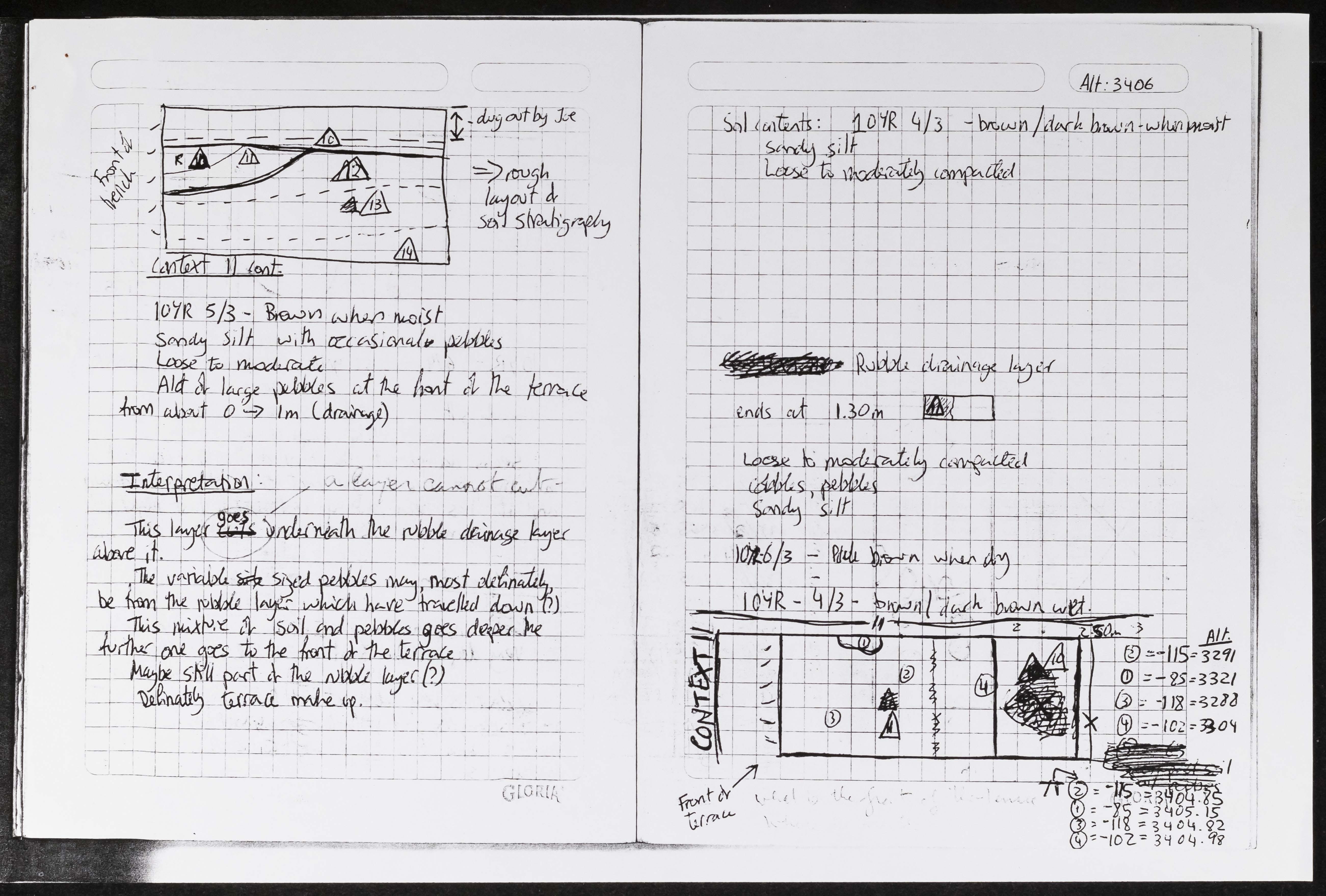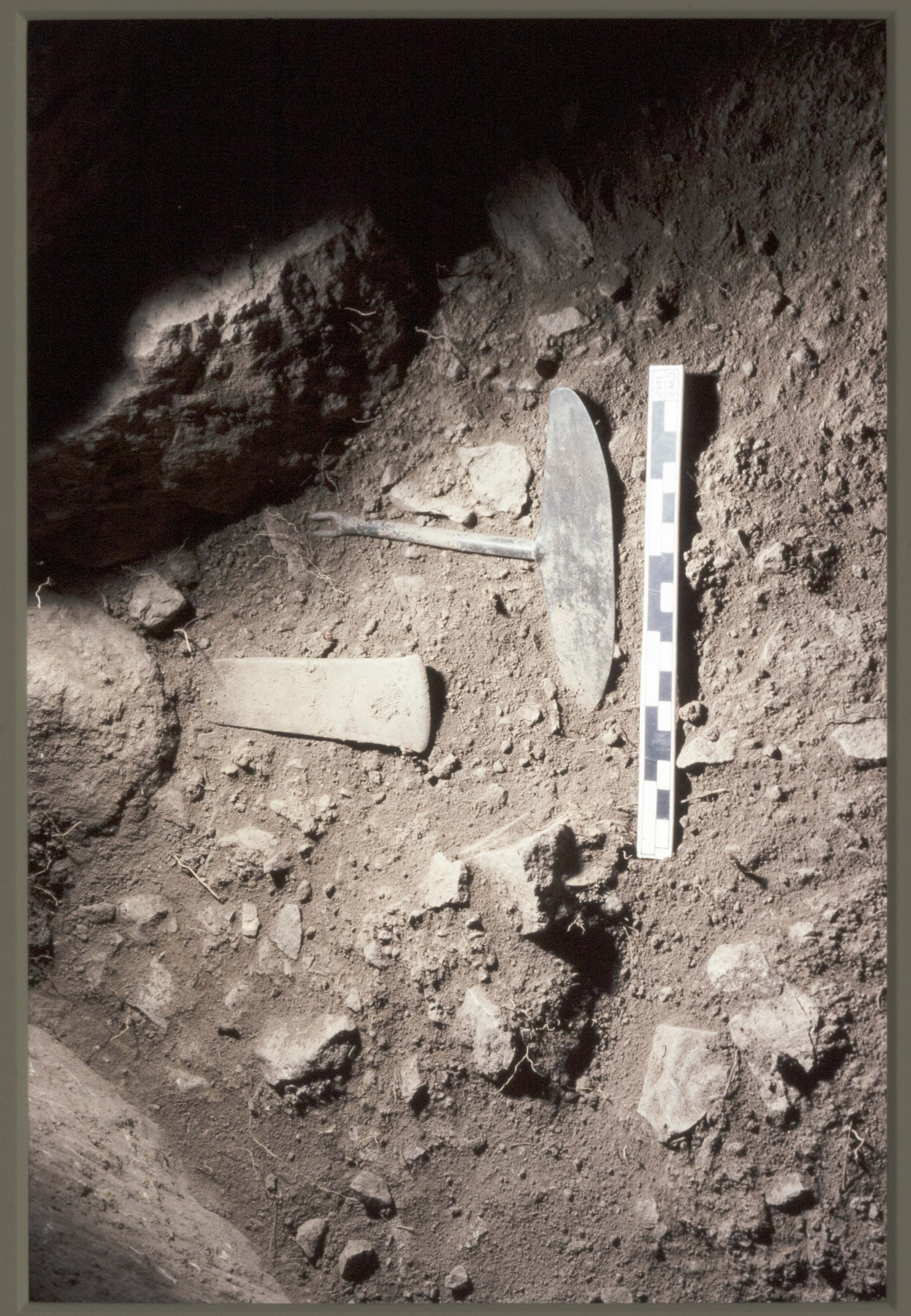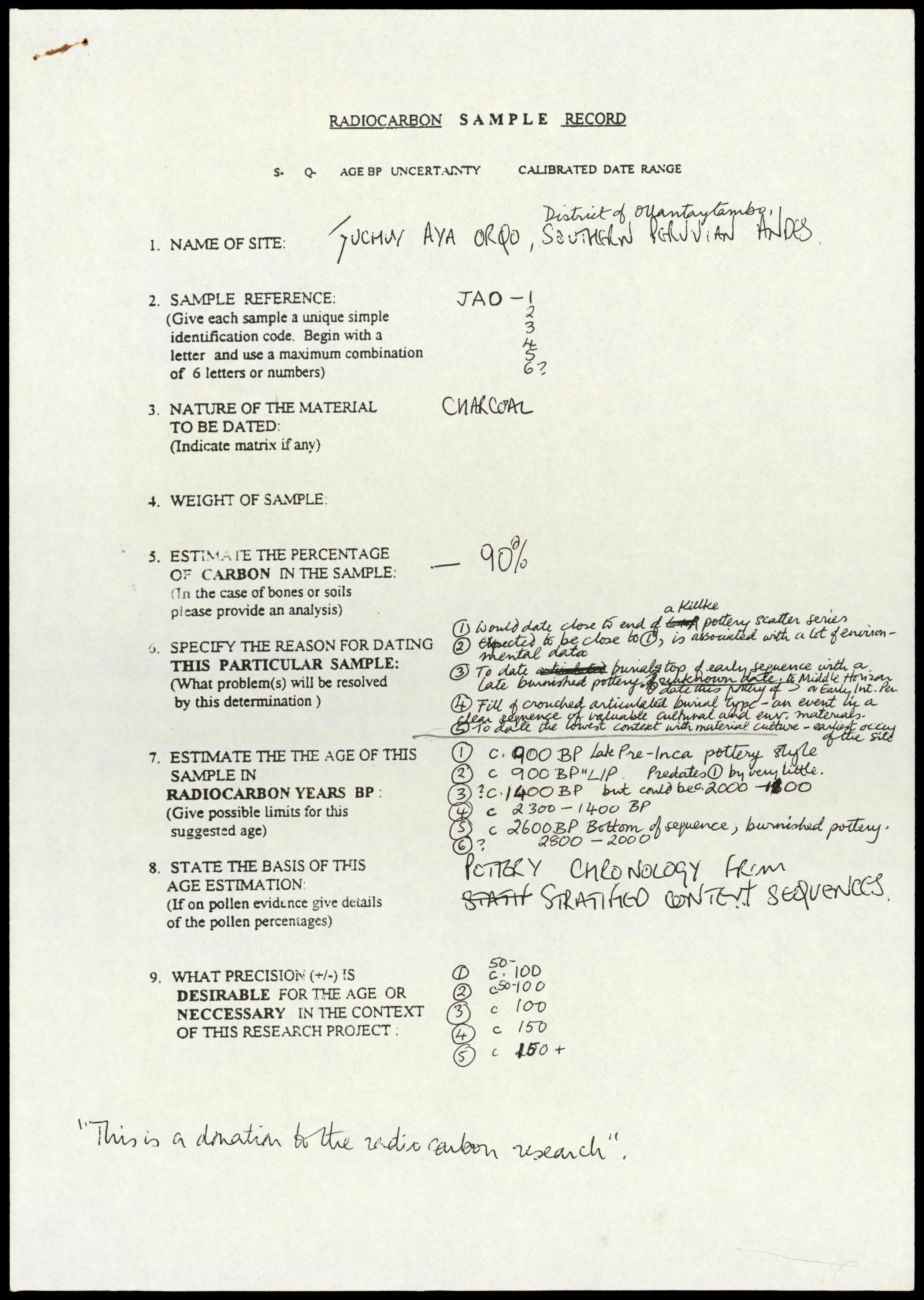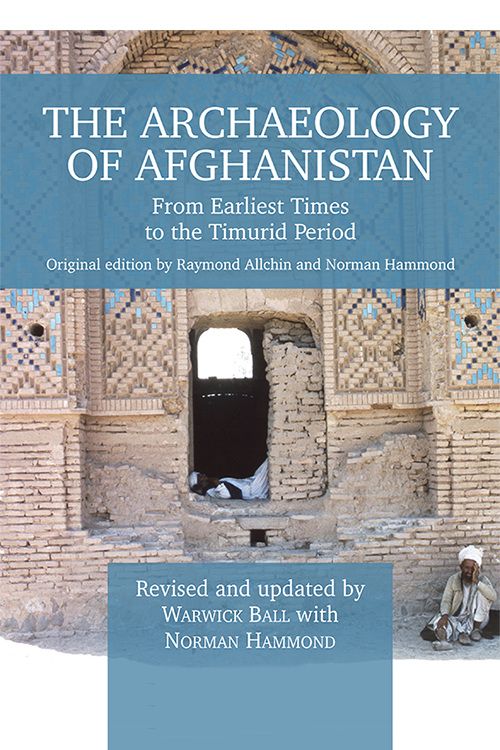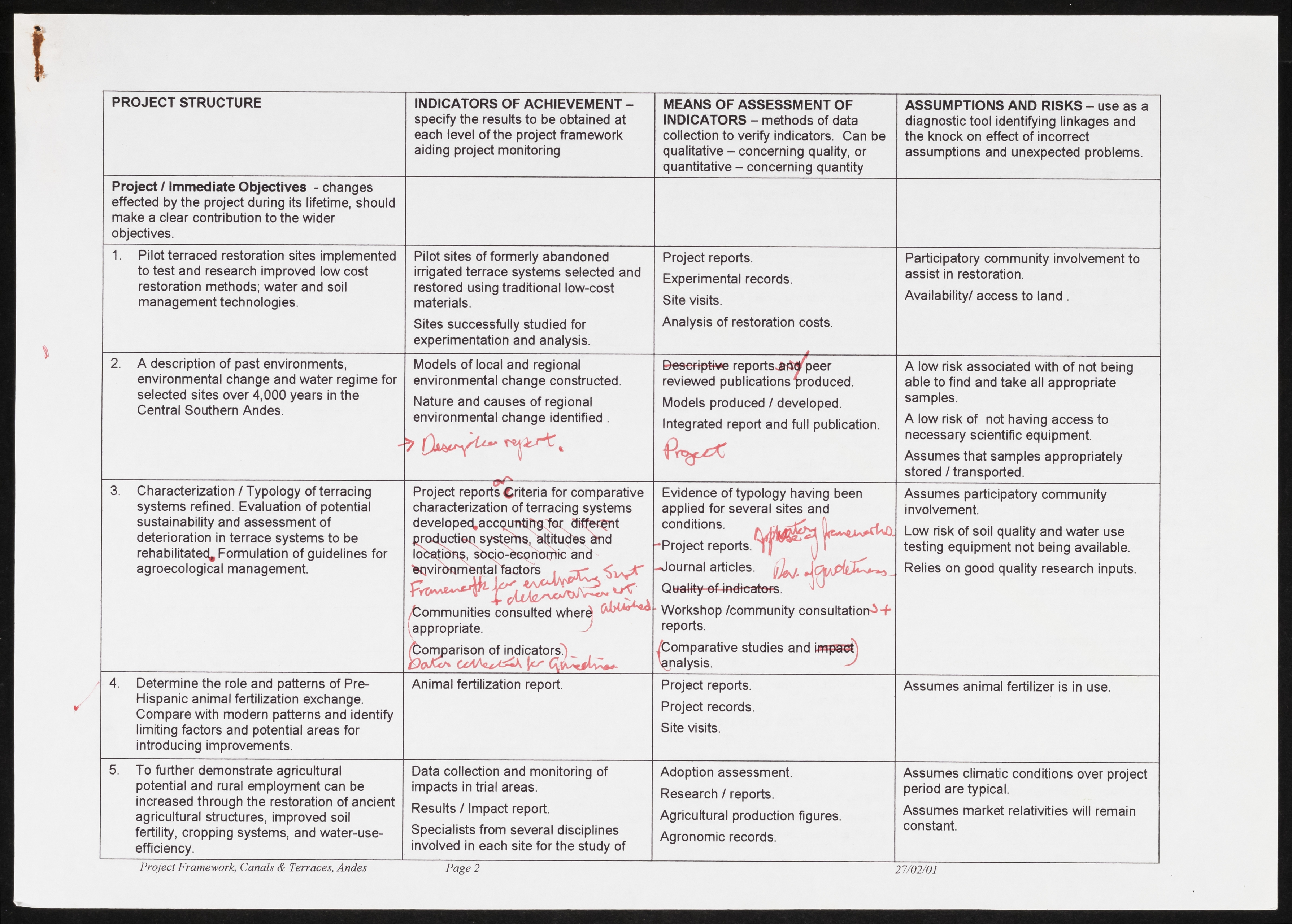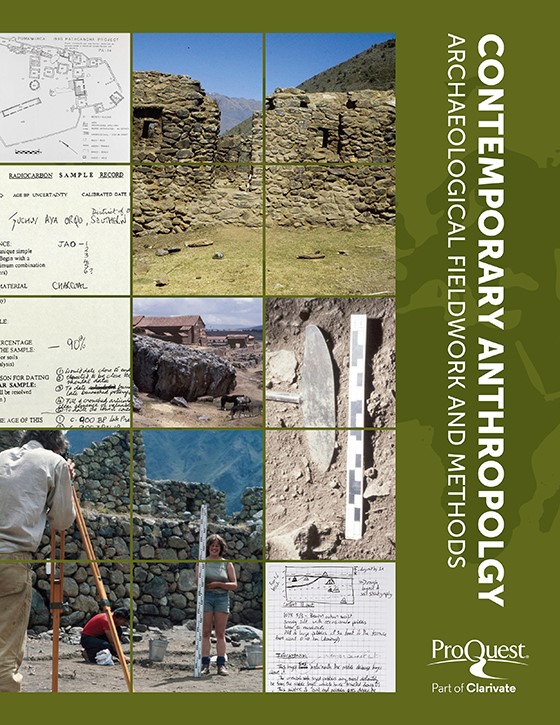

Contemporary Anthropology: Archaeological Fieldwork and Methods
Contemporary Anthropology: Archaeological Fieldwork and Methods brings together archival and textual material relating to archaeological excavations, methods, and practices done in the late 20th century to present day. It provides insights into the lives, cultures, and societies of ancient and not-so-distant civilizations through the analysis of material remains and artifacts from the past. This collection allows researchers and students to use archival material and published works to better understand, analyze, and critique archaeological research.
Featured in this collection is the The Cusichaca Trust Archive sourced from the Senate House Library, University of London. Led by archaeologist Ann Kendall, the Trust conducted numerous excavations in the South-Central Andes from 1980s-2010s. The archaeology, archaeobotany and ethnohistorical work focused on human occupation of the area from the late first millennium BC, through Inca expansion and into the Spanish Colonial period.
The collection includes a variety of media types including paper records, photographic materials, maps, plans, and digital media. Highlights include:
-
Patacancha project materials (c.1987-1997), relates to the second major project undertaken by the Trust. During this period, the goals of the Trust’s work became increasingly rural developmental, and this section of the archive includes specialist research relating to agriculture, environmental development, canal and terrace restoration, including the rehabilitation of the 6 km-long Pumamarca canal, an original pre-Inca structure extended during the Inca period.
-
Ayacucho and Apurimac project materials (c.1997-2013), relates to the last major project undertaken by the Trust. This was largely a rural development and agricultural project, aimed at reviving pre-Hispanic systems. Materials relate specifically to archaeology, rural development, project finances, and outreach.
-
Ann Kendall's personal papers and correspondence
-
Administrative effort involved in sustaining major projects in archaeology, rural development and other disciplines over a 40-year period. They reveal the changing aims and practices of diverse sub-projects, as techniques and approaches within each discipline were shaped by the interests and requirements of academic, governmental and private sponsors.
Material Culture: Study material remains left behind by past societies, including tools, pottery, buildings, artwork, human and animal bones, and other artifacts. These items offer tangible evidence of how people lived, worked, and interacted in different time periods and geographic locations. |
|
Inca pottery piece from the Cusichaca Project. n.d. Senate House Library, University of London. |
Cultural Context: Understand the context in which artifacts are found. The location, association with other objects, and stratigraphy (the layering of deposits over time) provide insights into the chronological and cultural significance of each find. |
|
Diagram And Notes Relating To Terraces And Trenches from the Ayacucho and Apurimac project (n.d.), The Cusichaca Trust Archive, Senate House Library, University of London. |
Excavation: Fieldwork involves carefully digging and documenting archaeological sites. Explore different techniques used like trowels, brushes, and screens to unearth artifacts while maintaining their context and record keeping methods about the depth and location of each find, which is crucial for analysis. |
|
Photograph from the Patacancha Project (n.d.), The Cusichaca Trust Archive, Senate House Library, University of London. |
Dating Methods: Determine the age of artifacts and sites is vital for constructing a chronological framework. Understand various dating techniques, including radiocarbon dating, dendrochronology (tree-ring dating), and stratigraphy. |
|
Radiocarbon Sample Record 1995, The Cusichaca Trust Archive, Senate House Library, University of London. |
Analysis and Interpretation: Once artifacts are excavated, they undergo thorough analysis. This includes examining the materials used, production techniques, and the cultural or functional significance of each item. Through interpretation, reconstruct aspects of daily life, social structures, economic systems, and religious beliefs. |
|
The Archaeology of Afghanistan: From Earliest Times to the Timurid Period by Edinburgh University Press 2019. |
Ethics and Conservation: Ethical considerations are crucial in archaeology, as the excavation and study of ancient sites can impact local communities and cultural heritage. Examine how archaeologists work to ensure the responsible preservation of sites and collaboration with local stakeholders. |
|
Project Framework Papers Relating To The Rehabilitation Of Andean Irrigated Terracing System, Senate House Library, University of London. |
Additional Use Case:
-
Public Outreach and Education: Archaeologists share their findings with the public through museum exhibitions, educational programs, and public lectures. This helps raise awareness about the importance of preserving cultural heritage and understanding our shared human history.
-
Types of Archaeology: Study the various subfields of archaeology, such as classical archaeology (focused on ancient Greece and Rome), historical archaeology (examining recent historical periods), underwater archaeology (studying submerged sites), and more.
-
Interdisciplinary Approach: Archaeology draws from multiple disciplines such as anthropology, history, geology, chemistry, and more. This interdisciplinary approach allows researchers to gain a holistic understanding of past societies and their interactions with the environment.
Topics Include:
3D Imaging, Bioarcheology, Maritime archaeology, Paleoecology, Lithic Technology, Rock Art, Colonialism, Repatriation, Cultural Heritage
Contemporary Anthropology: Archaeological Fieldwork and Methods is a key component of the Anthropology Resource Library package, along with the following collections:
Ethnographic Video Online Volumes I & II: Foundational Films
Ethnographic Video Online Volume III: Indigenous Voices
Ethnographic Video Online Volume IV: Festivals & Archives
Ethnographic Video Online: Royal Anthropological Institute Teaching Edition
Ethnographic Sound Archives Online


